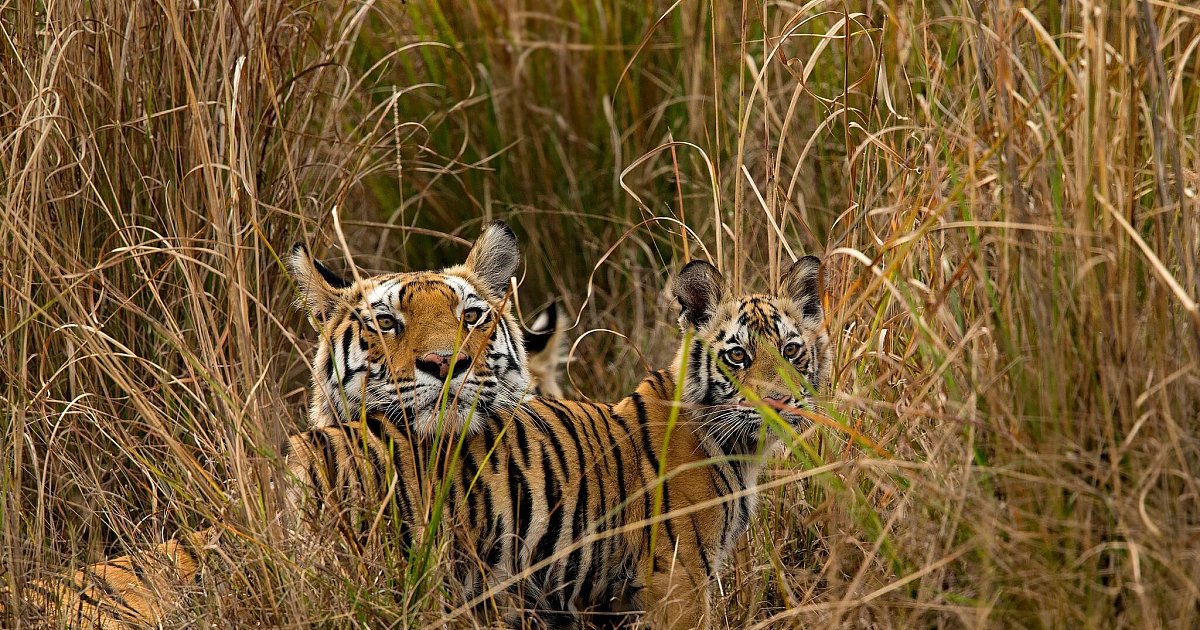There’s good and bad news about endangered tigers living in the wild: There have been more of them recently — but their habitat has shrunk by about 95 percent over the past 100 years. This was recently reported by the environmental protection organization WWF. Protected areas are fragmented, and the largest number of cats in the world is often exhausted there.
The organization warns that the tiger’s progress is fragile and has provided an analysis of potential new tiger habitats. Accordingly, 1.7 million square kilometers can be considered in 15 countries where tigers were or were located. This would nearly double the current tiger areas.
People are very close to tigers
But more tigers can also mean more conflicts with humans. Because with deforestation, human settlements are sometimes too close to predators. This can result in tigers killing people or their livestock – and then people killing tigers, sometimes out of revenge. The WWF asserts that tiger conservation can only work with the acceptance of the local population. Poaching is also a problem for tigers: people sometimes hunt big cats illegally — in part because tiger parts are common in Chinese medicine. But tiger prey is in their sight, too, which can lead to food shortages.
However, in principle, the tiger countries – this is India, where by far the most tigers live, Russia, China and many countries in South and Southeast Asia – agreed to protect the animals. 12 years ago in St. Petersburg, they set a goal of doubling the number of wild tigers by the Chinese “Year of the Tiger” in 2022. So far, India, Nepal and Russia have reported similar successes. According to the latest statistics, the number of tigers in Nepal has almost tripled, according to Kathmandu.
4500 wild tigers worldwide
But according to the WWF, development also went the other way: in Malaysia, for example, there was a significant decline. Something similar is expected in Indonesia, but official figures are still pending there, as in many other countries. The tiger is now extinct in Cambodia, Laos and Vietnam. According to the latest estimates, there are currently 4,500 wild tigers worldwide, up from about 3,200 12 years ago.
India is particularly fond of celebrating around 3,000 tigers – even though the populous country has very little forest area per capita and millions live in poverty. Environment Minister Bhubandar Yadav recently said the country loves tigers, as you can see from the numbers. He emphasized that the government has also increased its budget for animals over the years.
In the Hindu-majority country, tigers also have religious significance and the government is also aware of the importance of tigers for wildlife tourism. Tiger hunting was banned in the 1970s, and the hunt for predators has become less due to the country’s strong vegetarian traditions. The representative of the World Wide Fund for Nature emphasized that the government was also taking measures to defuse conflicts. People who have lost loved ones or livestock to tigers will be compensated.
The number of unlawful killings is declining
About 750 Amur tigers live in Russia. In the Amur region, the government has designated more than 1.9 million hectares of new protected areas in tiger habitat since 2011, matching an area the size of Saxony, or the expansion of existing protected areas, according to the WWF. In addition, the number of big cats killed by poachers has decreased dramatically over the past 10 years, according to the Amurtiger Center in the far east of the Giant Empire.
At the moment, the number of illegal killings is from 15 to 20 animals per year, ten years ago it was from 50 to 70. In the Primorye region near Vladivostok on the border with China, a new center will be built by the end of the year “to help wild animals in need” , especially Tiger Armor. Schools in the area also discuss how to protect animals.
According to the WWF, in most Southeast Asian countries, it is poaching with traps that affects the big cat and its prey. In addition, nationwide censuses, monitoring and assistance in tiger-human conflicts were often unavailable. But the WWF also sees a ray of hope there. For example, Indonesia plans to complete the first island-wide census of Sumatra by the end of 2022.
Cooperation with nature conservation organizations
The Sumatran tiger, the smallest of the living big cat subspecies, lives in Indonesia. According to estimates by animal protection organizations, today there are only 400-600 specimens of Panthera tigris sumatrae left. Whether the number is currently increasing or decreasing is unclear, but the animals that live only on the island of Sumatra are also classified as critically endangered. To ensure the survival of the species, the government is also setting up rehabilitation centers and reserves outside Sumatra in cooperation with conservation organizations.
In the medium term, the World Wildlife Fund sees opportunities to resettle tigers in countries where they have become extinct. Cambodia, Kazakhstan, Laos, Pakistan and Vietnam can be considered. It remains to be seen whether such ideas will find open ears politically.

“Alcohol buff. Troublemaker. Introvert. Student. Social media lover. Web ninja. Bacon fan. Reader.”





More Stories
Up to 100 pilot whales stranded in Western Australia – Science
Huge radiation explosion from a magnetar – forschung.de
Principles and features of the folk nutritional principle